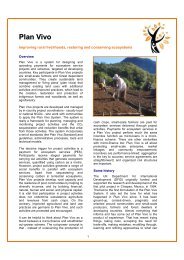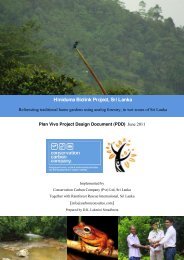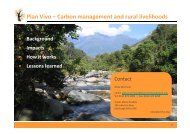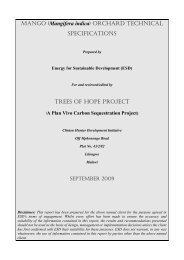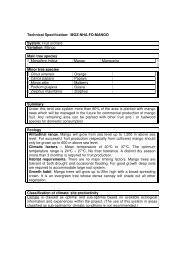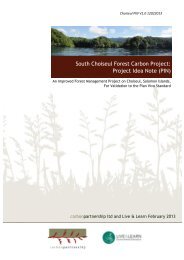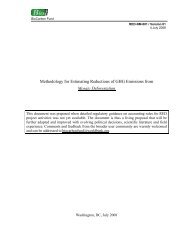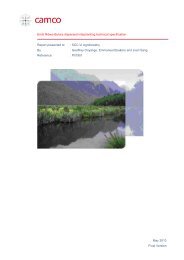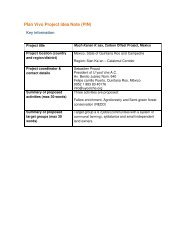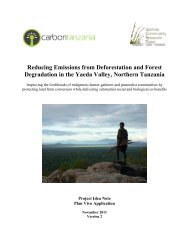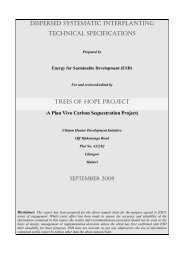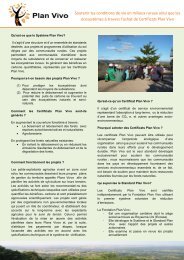Arbres locaux pour un monde meilleur | Local trees for a better world
Arbres locaux pour un monde meilleur | Local trees for a better world
Arbres locaux pour un monde meilleur | Local trees for a better world
Create successful ePaper yourself
Turn your PDF publications into a flip-book with our unique Google optimized e-Paper software.
4<br />
Comm<strong>un</strong>ity Payments <strong>for</strong> Ecosystem Services in Patako | Plan Vivo PDD 2012<br />
(Anacardium occidentale) and mango (Mangifera indica) are the most common fruit <strong>trees</strong>.<br />
The Patako Forest is an island of biodiversity and an important carbon sink (Montagnini and Nair,<br />
2004). Figure 2 shows <strong>for</strong>est cover within the core of the <strong>for</strong>est. In contrast, tree cover in the<br />
cultivated land areas aro<strong>un</strong>d Patako Forest is very low (aro<strong>un</strong>d 1%, Christensen, 2010). Trees are<br />
sparsely distributed as most have been cleared. Naturally occurring <strong>trees</strong> have been cleared to <strong>for</strong><br />
crops, firewood and timber and are still declining by 3% per annum on agricultural land (<br />
Figure 2: Patako Forest<br />
).<br />
Figure 2: Patako Forest<br />
In Figure 3, the photo on the left shows land denudation caused by <strong>un</strong>sustainable farming<br />
practices. This gives rise to soil erosion and loss of soil fertility. The photo on the right shows<br />
degradation of relatively dense vegetation stands in Patako Forest.




